What’s the first thing the audience notices about your blog?
More often than not, it’s your domain name.
Far more than just a web address, your domain name is the cornerstone of your blog’s identity. It sets the tone of your brand, hints at your content, and leaves a lasting impression on your audience.
In this post, we’ll discuss how to choose a domain name that not only suits your blog but also supports your growth and success.
So, without any further ado, let’s get started.

Table Of Contents
1 Why is Domain Name Important?
Your domain name is more than just your blog’s address—it’s the first impression visitors get.
Think of it like your blog’s storefront. A clear, memorable domain name builds trust, establishes credibility, and instantly communicates what your blog is about. On the other hand, a confusing or hard-to-remember name can cause potential readers to lose interest before they even land on your site.
A well-chosen domain name also plays an important role in SEO. When it’s relevant and easy to understand, it helps search engines recognize your blog’s topic, improving your chances of ranking higher and getting more clicks in search results.
Avoid overly generic or keyword-stuffed names—they can feel spammy and may not align with your target audience or perform well in search engines.
In short, the right domain name strengthens your brand identity, enhances discoverability, and sets the stage for long-term growth.
2 How to Choose a Domain Name
Choosing a domain name for your blog is an important step in establishing your online presence. Here are some key elements to consider when you choose a domain name for your blog.
2.1 Be Descriptive
First, keep it simple, descriptive and memorable. An easy-to-pronounce domain name is more likely to stick in people’s minds and be easily shared.
For instance, if you’re creating a fitness blog, a name like ‘FitJourney.com‘ is clear, descriptive, and relevant. Avoid using long or complex names with tricky spellings, confusing readers, or leading to typing errors when visiting your site.
Next, ensure that your domain reflects your blog’s niche or purpose. Visitors must understand what your blog is about just by looking at the domain name.
For example, an eco-friendly blog like ‘greencitizen.com’ instantly communicates your content focus.
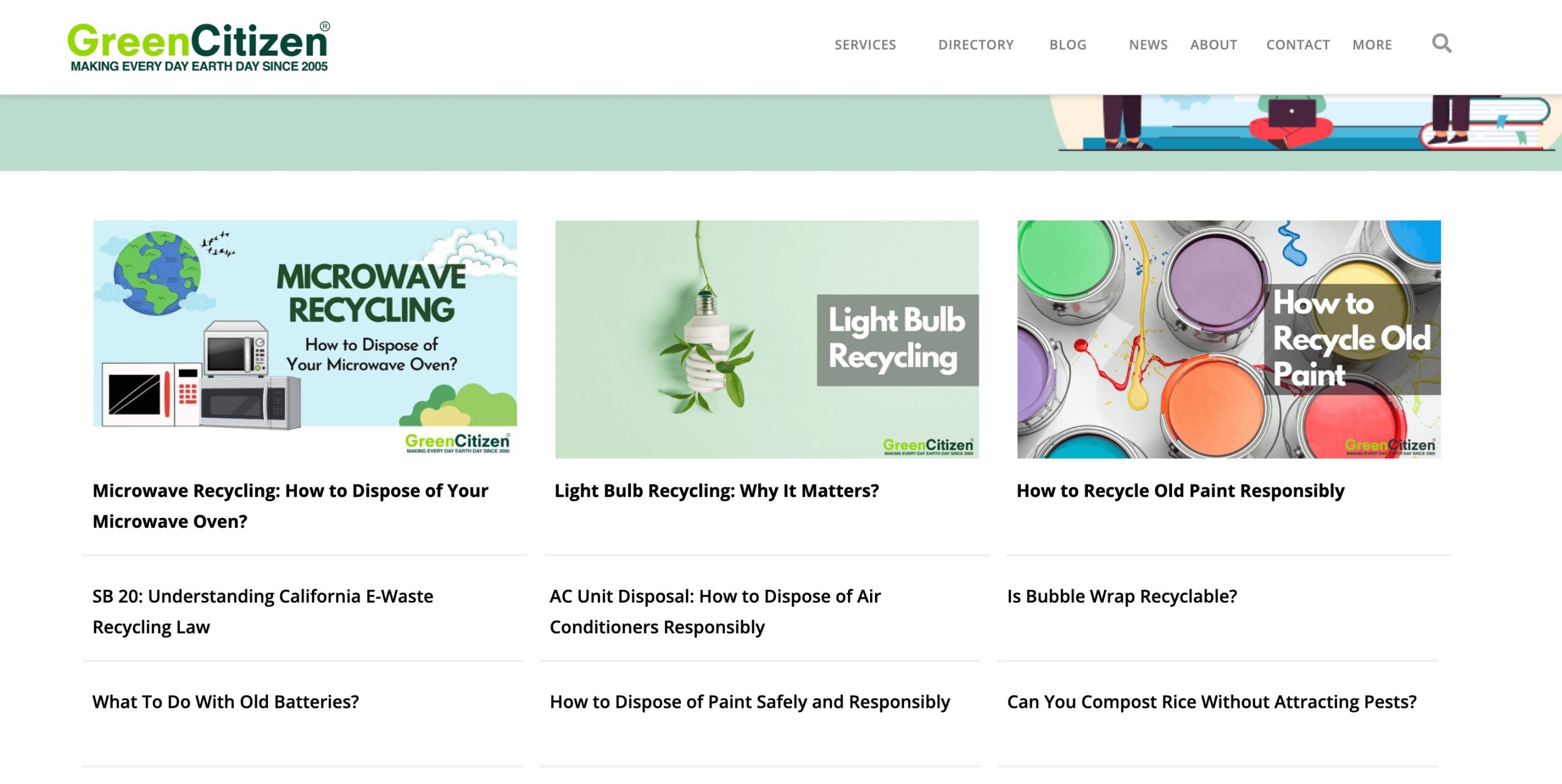
This helps build relevance for your audience and improves your chances of appearing in search results when people look for related topics.
2.2 Have a Brandable Domain
A brandable domain name is one that goes beyond just describing your blog’s purpose or keywords – it’s unique, memorable, and stands out from the crowd.
A brandable domain doesn’t have to be literal or generic; instead, it should evoke a feeling, be descriptive, and align with your brand’s identity.
For instance, ‘google.com’ doesn’t relate to search engines, but over time, it has become synonymous with searching the web. The name is short, catchy, and brandable, making it easy to remember and distinguish from other services.

When creating a brandable domain name for your blog, aim for something that represents your brand’s voice and personality. It should be short, simple, descriptive, and able to grow with your blog as it expands.
For instance, if you’re starting a fashion blog, instead of choosing something generic like ‘FashionBlog.com,’ consider something more creative like ‘GlamHeaven.com.’
2.3 Keep it Short, Simple, and Memorable
When you choose a domain name, simplicity is key.
A simple, short, and memorable domain name is not only easier for visitors to type and share but also sticks in their minds, leading to higher brand recall and repeat visits.
Try to keep your domain name under 15 characters, excluding the extension. A brief and catchy name is easier to remember and type, increasing the likelihood that the audience will return to your site.
For instance, ‘BuzzFeed.com’ is a short, memorable domain that instantly tells you what the site offers: engaging, buzz-worthy content.

2.4 Keep It Below Four Syllables
Keeping your domain name under four syllables is a smart strategy for creating a name that is easy to say, remember, and type.
Longer names can feel cumbersome and are harder to recall, while shorter names which have less syllables create a smoother experience for users.
For instance, ‘Rank Math’ has two syllables: Rank and Math, and hence, it is easier to pronounce, type, and remember.
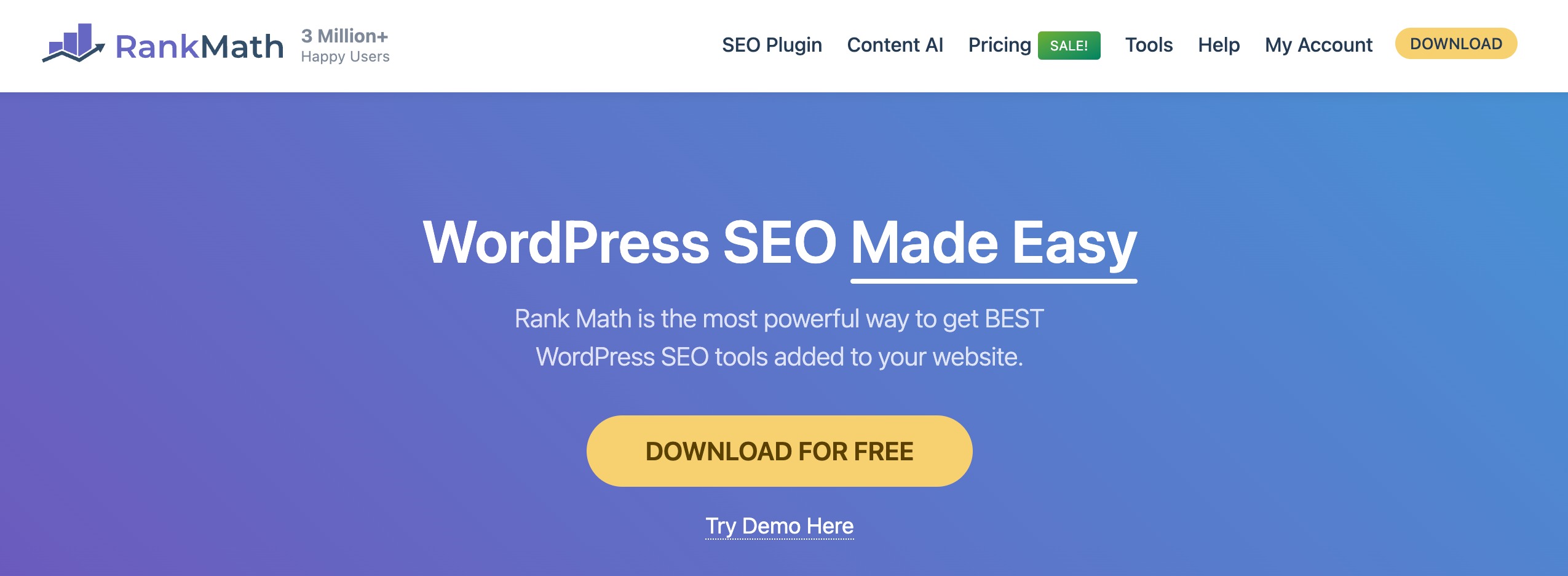
On the contrary, a long domain name, like ‘SuperAmazingTechnologyBlog.com’, is difficult to remember and type.
A concise name reduces the risk of spelling errors, especially when your visitors hear it spoken aloud.
Keeping your domain name under four syllables is a small detail that can greatly impact how well your blog is received and how easily visitors can find it.
2.5 Beware of Double Meaning
Choosing a domain name might seem simple—until it accidentally sends the wrong message.
Because domain names don’t include spaces, seemingly innocent combinations of words can take on unintended or even embarrassing meanings when read aloud or quickly scanned.
For instance, consider a domain name like speedofart.com. Intended to showcase art and creativity, the name unfortunately reads as Speedo Fart when seen as a single string—definitely not the impression you want to give visitors.
To avoid situations like this:
- Read your domain name aloud to check for unintended interpretations.
- Ask friends or colleagues for honest feedback—they may notice something you missed.
- Be cautious with domain generators, as they don’t always catch awkward combinations.
- Double-check potential domain names visually, especially if they combine multiple words.
A quick review now can save you from a branding disaster later.
To make it easier, you can use AI name generators to generate domain name ideas. The primary benefit of using AI tools is time savings, and 71% of users list this as their top advantage.
In Namelix, enter a few keywords into the search box, pick a name style, and choose the level of creativity you want from the AI.
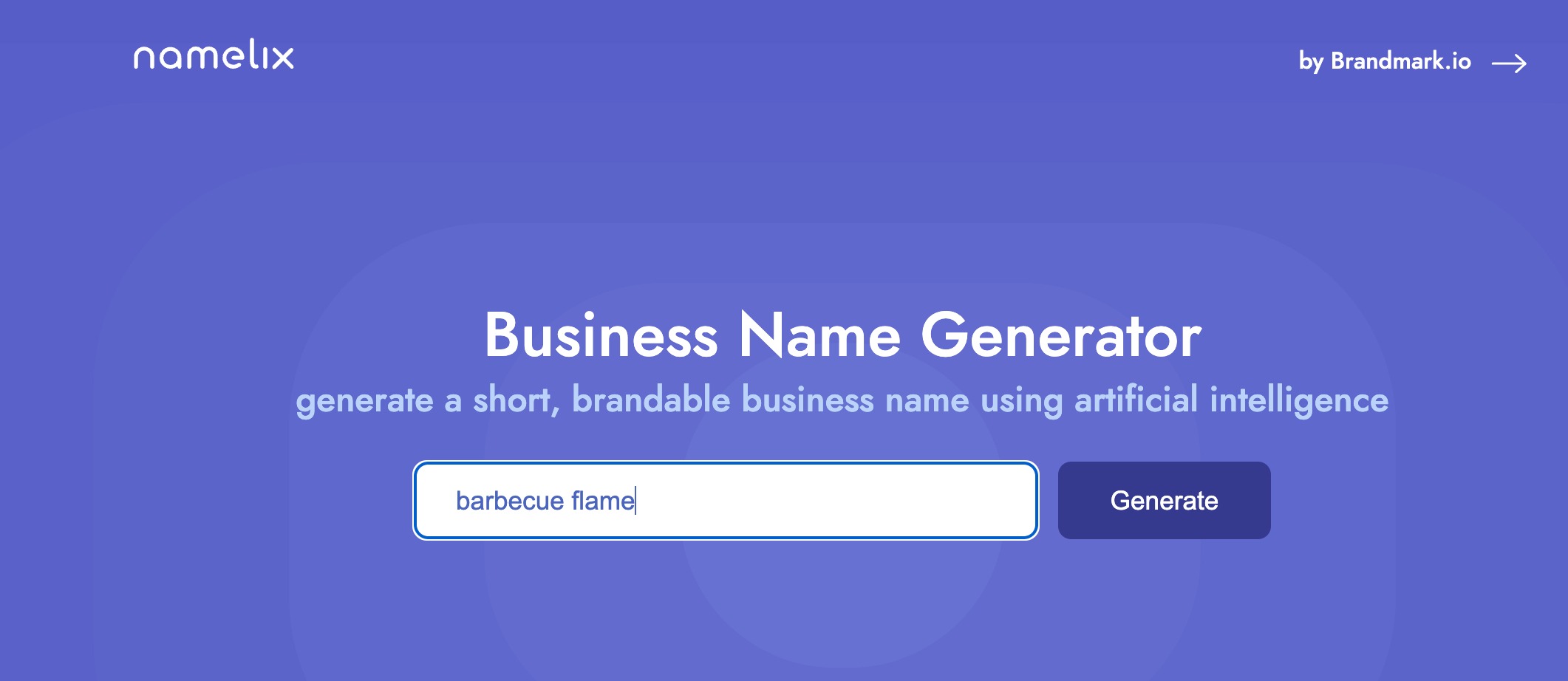
And Namelix will generate a list of potential domain names for you.
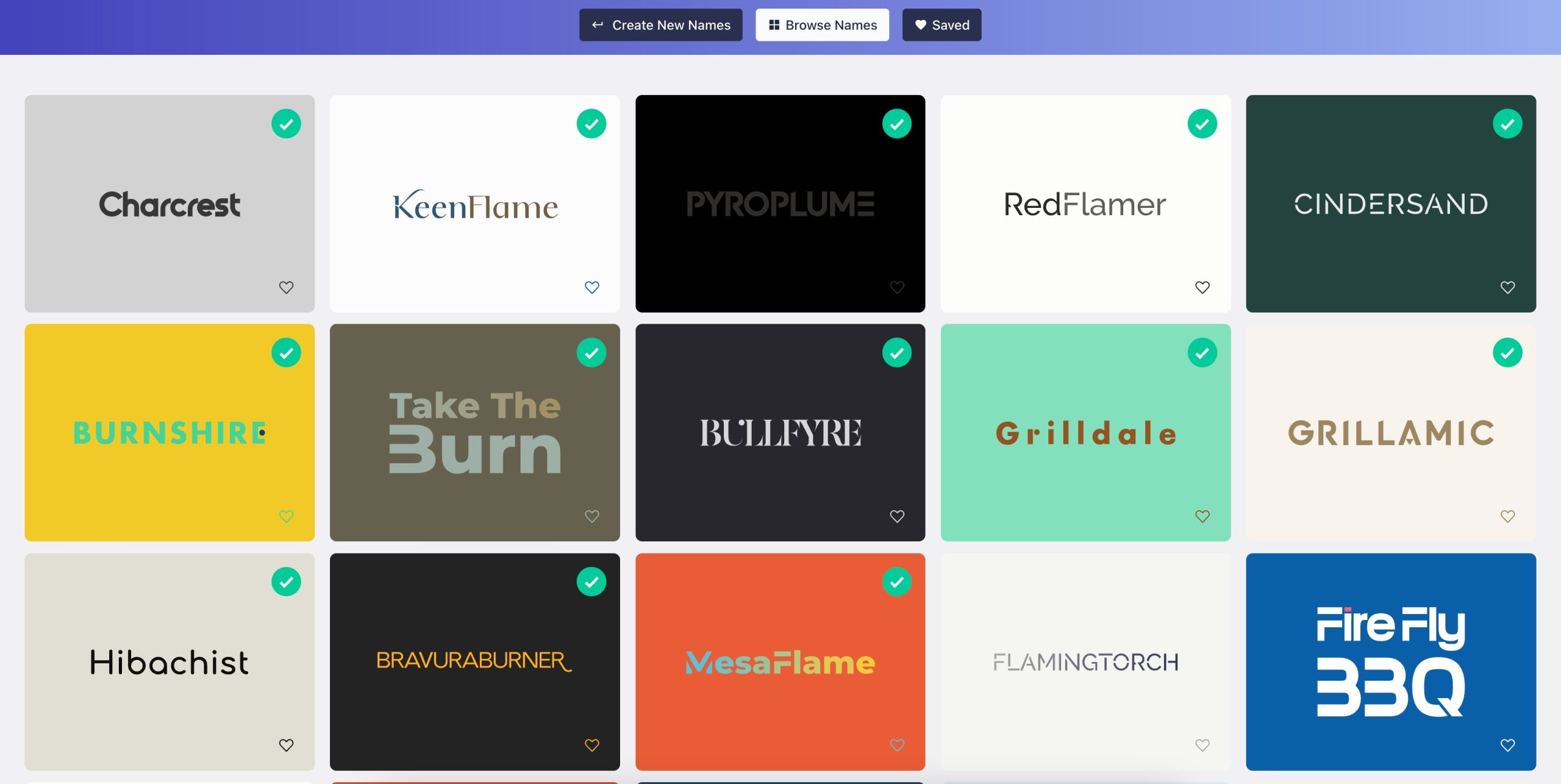
Similarly, you can use the Lookas Business Name Generator AI tool.
2.6 Avoid Hyphens and Numbers
When you choose a domain name, it’s best to avoid hyphens and numbers, as they can make your web address harder to remember, type, and share.
Hyphens can make a domain name harder to communicate verbally. If you were to tell a friend about a blog with the domain ‘my-cooking-blog,’ you would have to clarify the presence of hyphens. Visitors are more likely to forget the hyphen or mistype the URL, which can lead them to the wrong site or cause frustration.
Similarly, numbers can cause confusion, especially when it’s unclear whether the number should be written as a digit or spelled out. For instance, a blog with the domain ‘FiveStarRecipies.com’ can be typed incorrectly as ‘5StarRecipies.com’ or vice versa.

So, it’s important to avoid hyphens and numbers when you choose a domain name to make it more user-friendly and professional.
2.7 Scalability
Scalability is key when selecting a domain name, especially if you plan to grow your blog or business over time.
A scalable domain gives you the flexibility to expand your content or services without the need to rebrand or change your web address, which can negatively impact your audience and SEO performance.
For example:
- A domain like FitnessTipsForTeens.com limits you to a very specific niche—teen-focused fitness content. But what happens when you want to target adults or seniors later on? You’d either have to rebrand or stay confined to your original audience.
- In contrast, a broader name like FitLife.com offers ample room for growth. It’s still relevant to fitness, but flexible enough to include all age groups and fitness levels as your blog grows.
Choosing a scalable domain helps future-proof your brand. It keeps your content strategy open-ended and avoids the hassle of starting over as your vision grows.
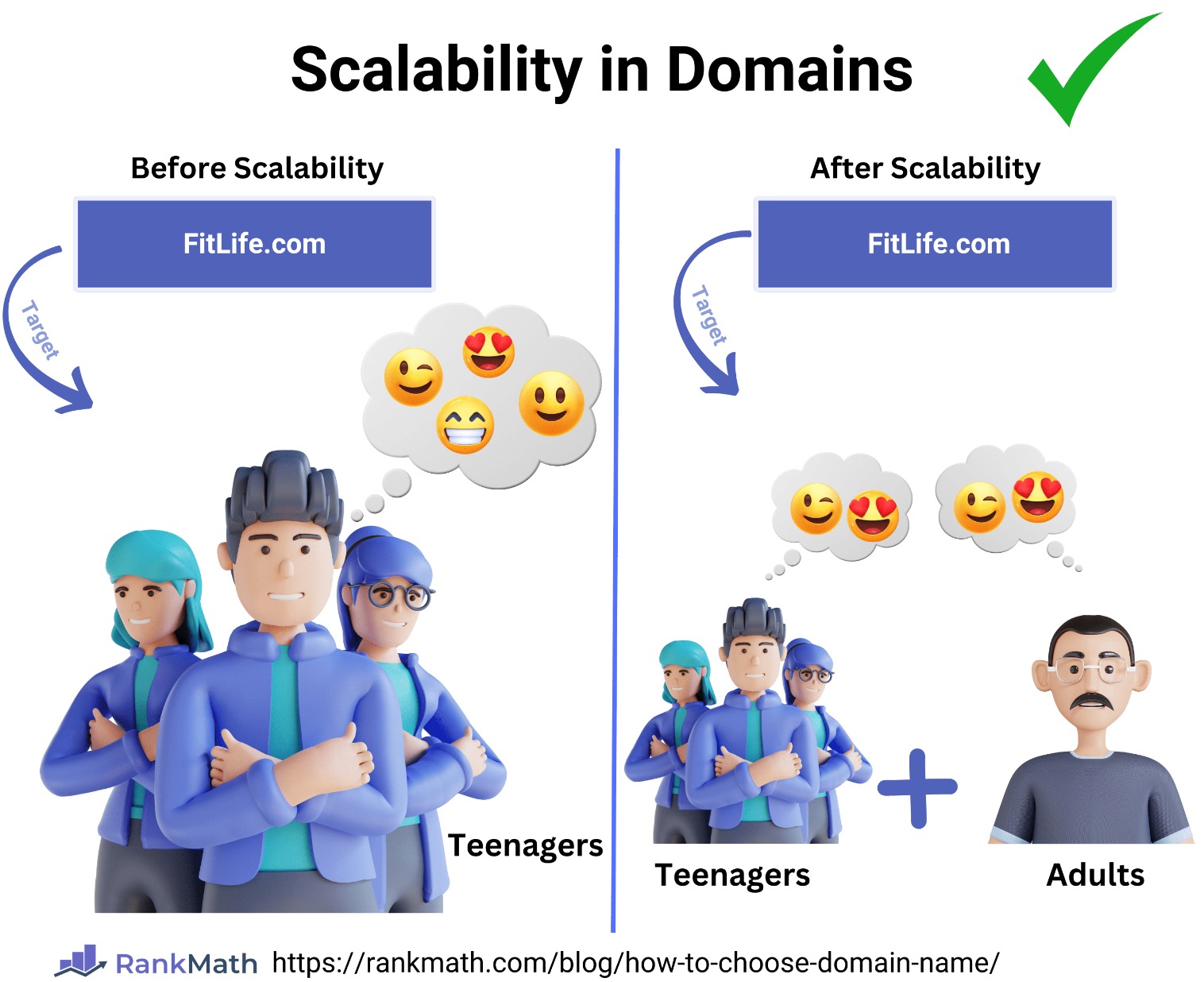
Choosing a scalable domain helps future-proof your brand. It keeps your content strategy open-ended and avoids the hassle of starting over as your vision grows.
2.8 Go for a ‘.com’ Extension
Opting for a ‘.com’ extension is the best choice for several reasons. The ‘.com’ extension is the most widely recognized and trusted domain suffix, giving your blog instant credibility.
One of the key advantages of a ‘.com’ domain is its global appeal. While there are many other extensions available, such as ‘.net,’ and ‘.org,’ and industry-specific extensions like ‘.blog’ or ‘.co,’ ‘.com’ remains the most familiar.
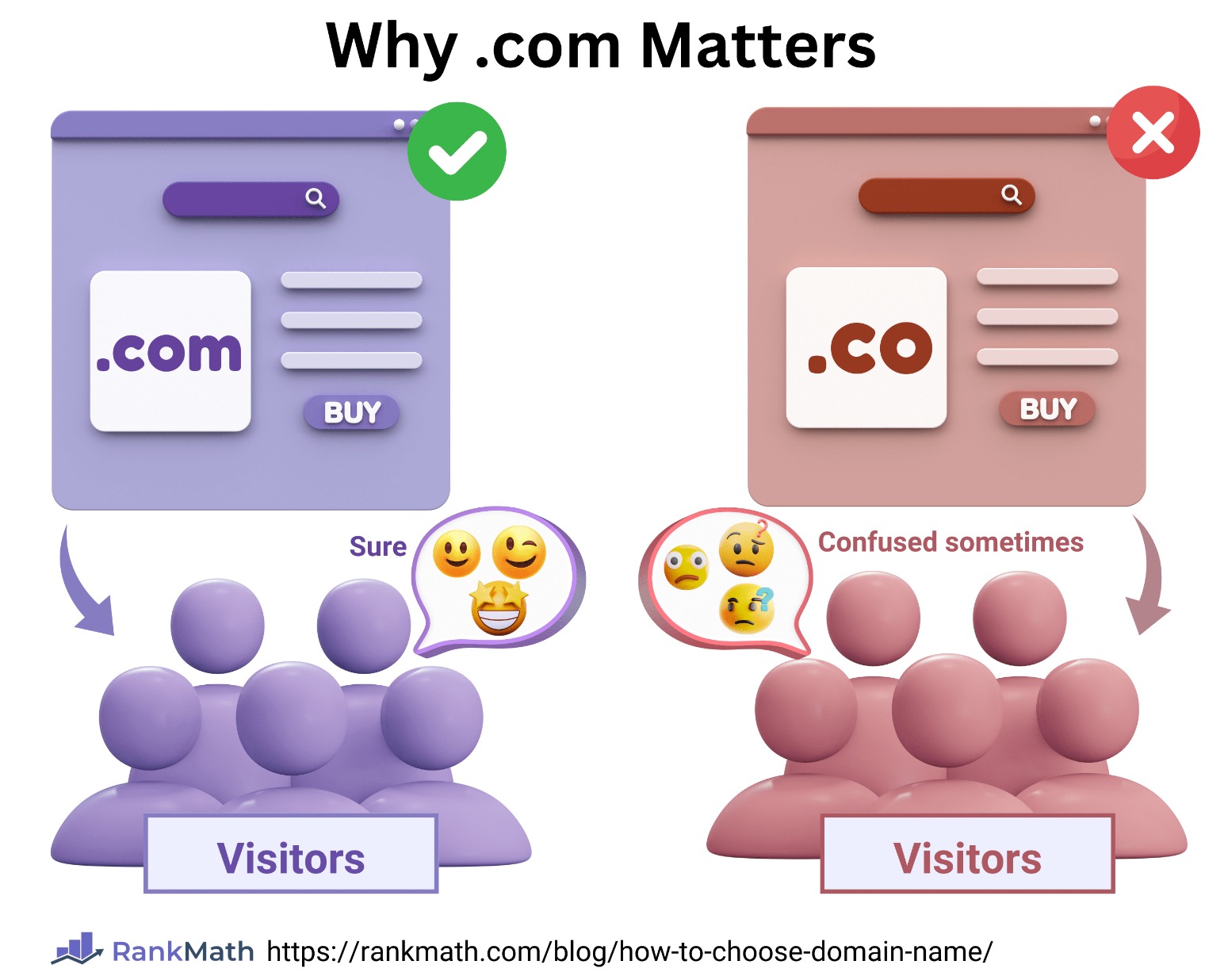
For instance, if your blog’s address is ‘AwesomeBlog.co’, visitors may accidentally type ‘AwesomeBlog.com’ instead, which can lead them to an unrelated or competing site.
Successful companies and brands almost always secure a ‘.com’ domain for this very reason. Using a ‘.com’ extension is a smart decision because it offers universal recognition and trust and reduces the risk of your visitors landing on the wrong site.
2.9 Avoid Legal Conflicts
Before you settle on a domain name, make sure it doesn’t violate any existing trademarks.
Trademarks legally protect brand names, logos, and phrases. If your domain name includes a trademarked term—whether intentionally or not—you can face serious consequences, including legal action, loss of your domain, and financial penalties.
For instance, using a well-known name like “Nike” in your domain—even if your blog has nothing to do with sports—can still infringe on trademark rights and land you in legal trouble.
To stay on the safe side:
- Search for existing trademarks using government databases like the USPTO or global trademark search tools.
- Avoid names that closely resemble existing brands, especially those in your industry.
- Use original, made-up, or creatively modified words to create a unique identity.
- Consider trademarking your own domain name if it’s distinctive and part of your long-term brand strategy. This protects your brand from being copied in the future.
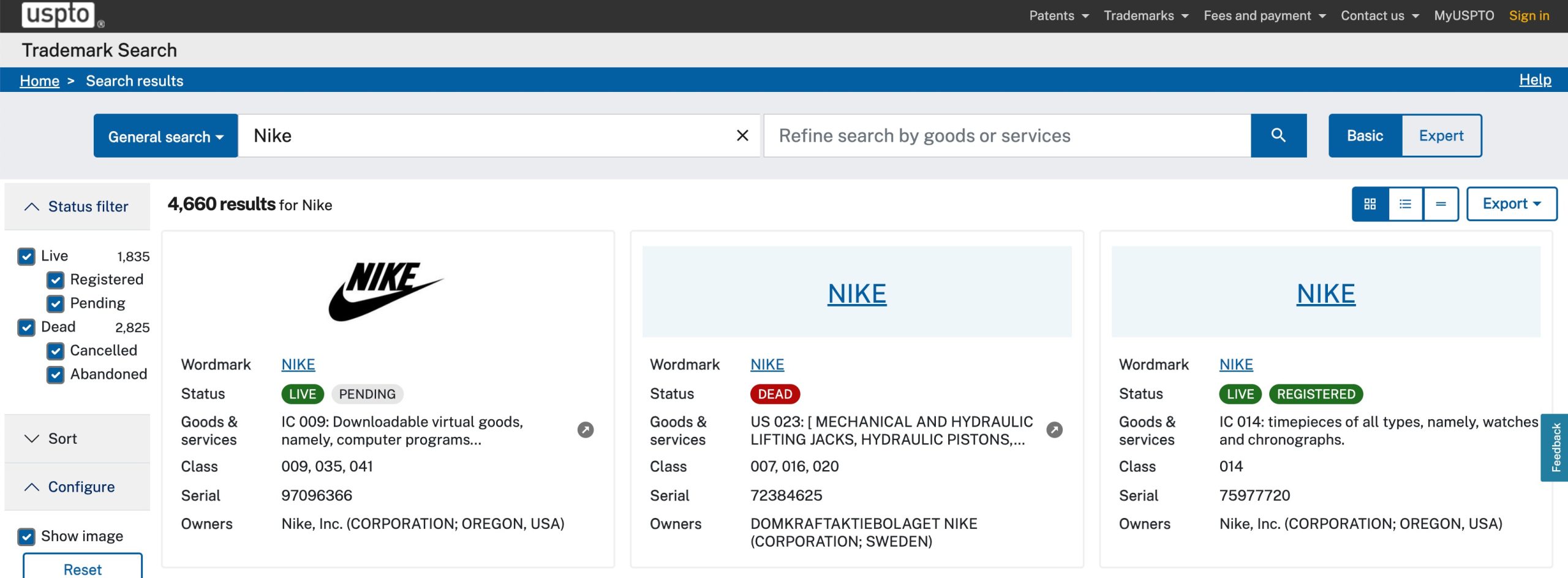
3 Conclusion
Choosing a domain name is an essential step in building a successful blog.
A well-chosen domain name can make your blog more memorable, scalable, and easily accessible, ultimately helping you build a stronger online presence.
So, take the time to get it right, as it plays a key role in the growth and future of your blog.
If you like this post, let us know by Tweeting @rankmathseo.
![How to Choose a Domain Name for Your Blog [9 Easy Steps]](https://rankmath.com/wp-content/uploads/2024/10/How-to-Choose-a-Domain-Name.png)